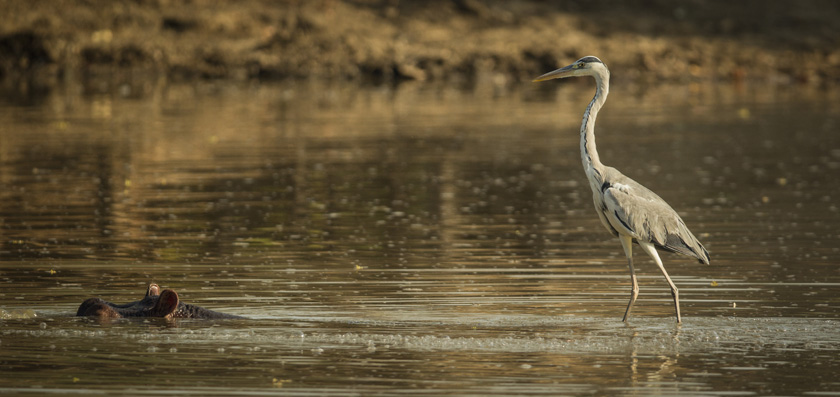(Pictured above: Grey Heron riding on the back of a hippo as it walks along the bottoms of the pond.)
The Grey Heron is common to Europe, Asia and also parts of Africa.
It stands approximately 100 cm (39″) high and has a body mass of between approximately 1kg and a little more than 2kgs.
Herons are easy to identify in the air, as they retract their necks into an “s” shape, which distinguishes them from the other large birds such as Storks, Cranes and Spoonbills.
Grey Herons can be found on moist land seeking their prey, but are mainly waders, and will feed readily on small fish, frogs, insects, lizards and small amphibians which they find by wading in shallow water alongside rivers, inland waterways, ponds and dams.
Hippos spend most daylight hours wallowing in the water and when they defecate in the water, using their tails to spread the their dung, the plume of dung in the immediate water column attracts lots of small fish which seek the nutrients found in hippo dung.
Grey Herons have worked out that hippos make ideal platforms from which to hunt. Whether they are simply wallowing in the shallows, or walking along the bottom of the pond, riverbed or inland waterway. (Hippos cannot swim in the true sense of the word – they walk along the bottom.)
The relationship between Grey Herons and hippos and also fish and hippos, is known as commensalism (commensal – Latin translation: Eat at the same table) where one organism benefits, but does not affect the other. Similar Commensal relationships can also be found between many insect eating birds and the livestock or wild grazers which they follow in the hopes that the animals will stir up hiding insects and bugs, making them immediately available for predation.
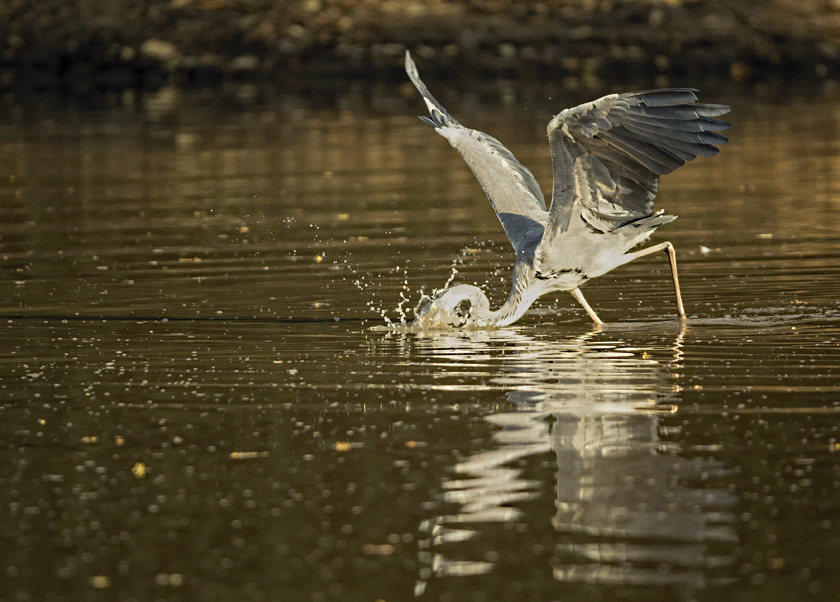
Lunging at an unsuspecting fish…
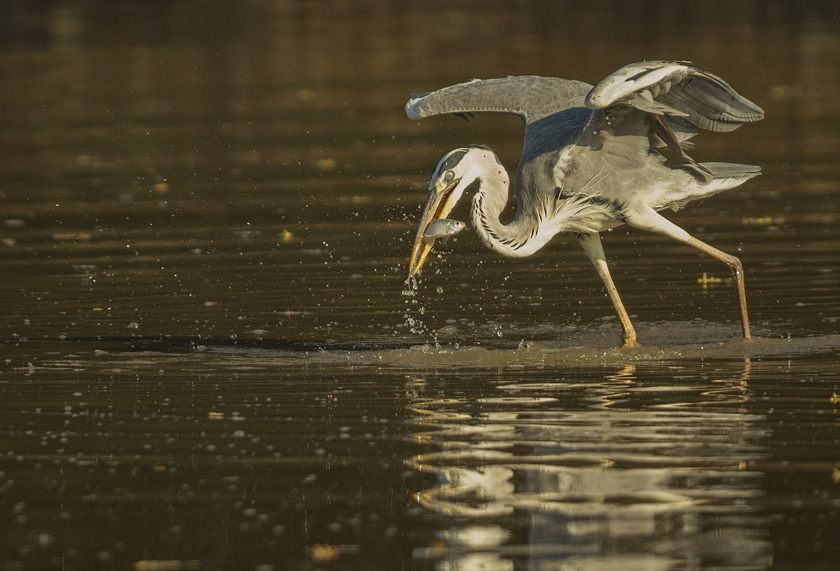
Successful hit reveals a small Tilapia (common in Africa) The left eye of the Grey Heron appears clouded. This is the Nictitating Membrane that acts as a second eyelid and is translucent to protect the eye from dirt and damage, while still allowing the bird to see a little while it’s head is submerged.
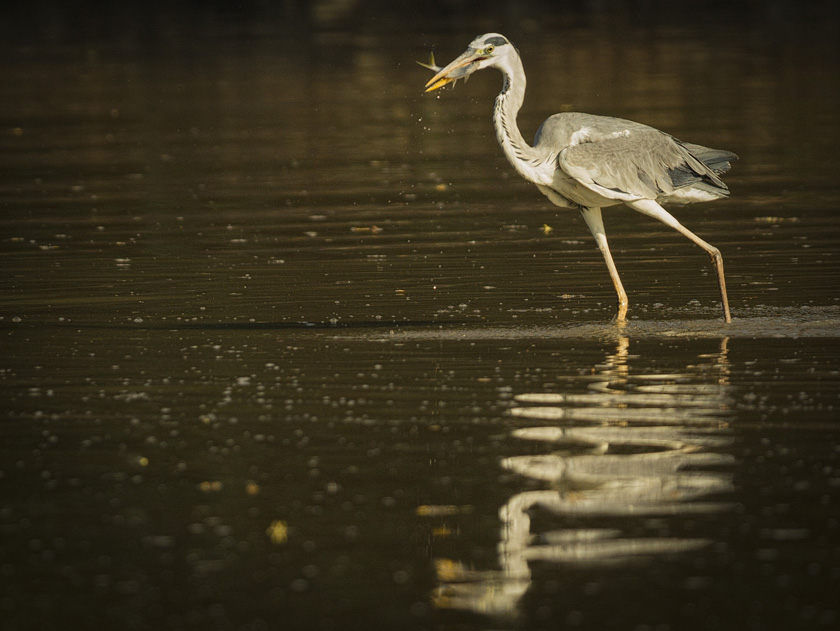
The Grey Heron starts to position the Tilapia in preparation for swallowing whole.
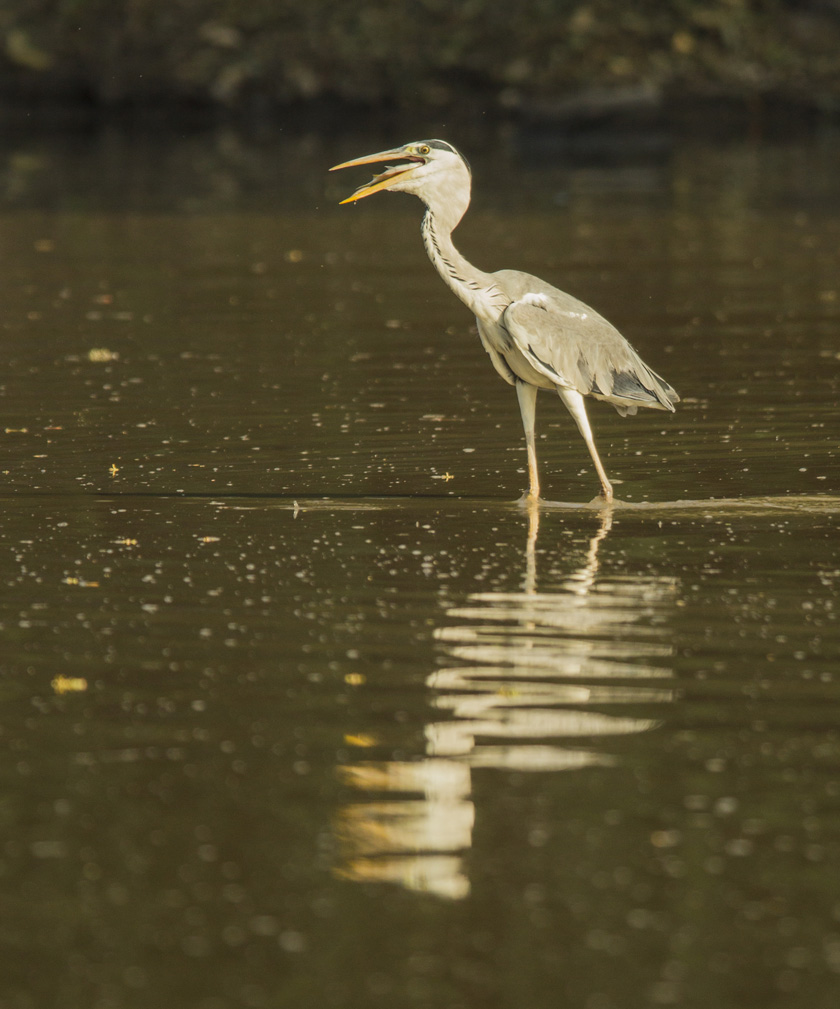
The Tilapia is positioned head first so it doesn’t catch it’s spines in the Grey Heron’s throat.
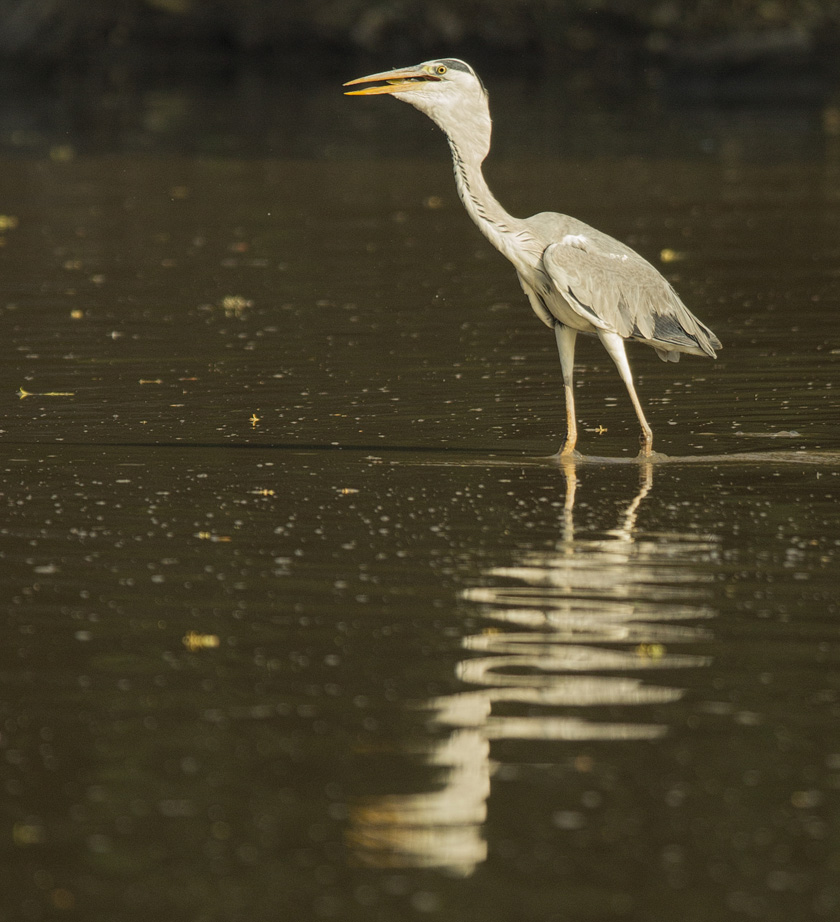
The fish starts its journey into the gullet of the Grey Heron.
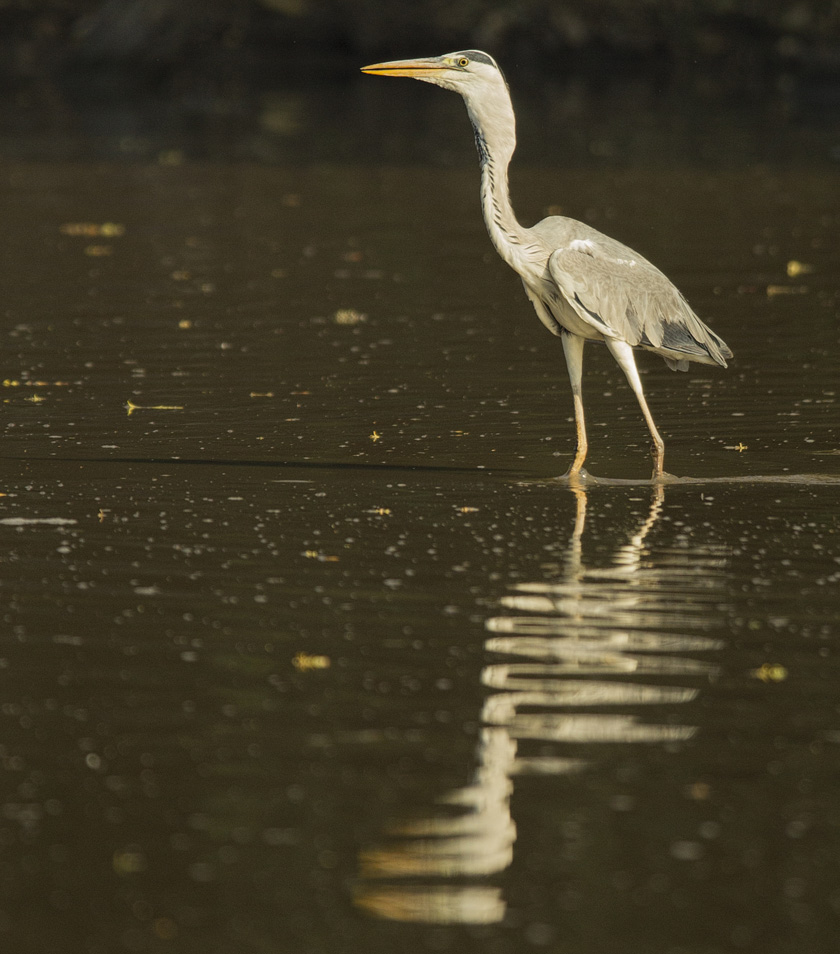
The bulge in the Grey Heron’s throat indicates the position of the fish as it slides down the bird’s throat.
